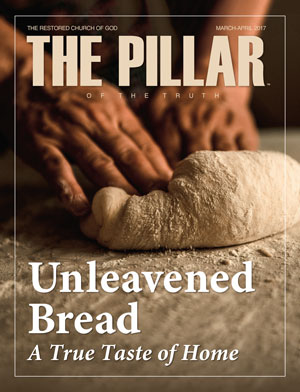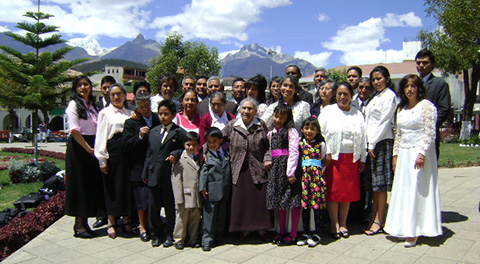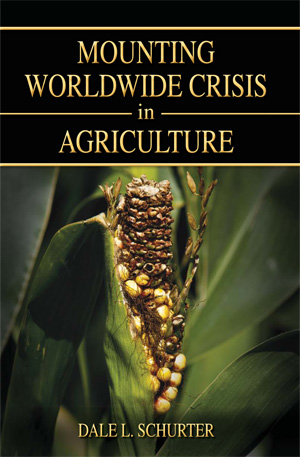Homegrown fruits and vegetables are one of the joys of the year’s warmer months—crisp, leafy greens; firm, bright-yellow corn; plump heirloom tomatoes; and more—all grown in your own backyard. If you do not have a plot of land big enough, then you may have planters on your patio or a food garden mixed into flower beds.
Does this sound familiar to you? If not, this may be the year to begin a new tradition in your household!
The whole family can benefit from gardening, both from the experiences of seeing God’s agricultural principles at work and the resultant harvest. It illustrates His creative genius and teaches the value of vision, planning and management of time and resources. In the process, creating a garden produces opportunities for family togetherness.
Farmers markets and CSA (community-supported agriculture) farms have increased in popularity, with growing numbers willing to commit large chunks of their budgets and time to local produce. (Those who are committed to this practice are sometimes called “locavores.”)
Two major reasons for this are flavor and quality. In Vegetables for Today’s Gardens, author R. Milton Carleton explained: “Today, by train, truck, and plane we draw on the riches of half the world for food. This gain in variety has not been all gain, however, for in reaching afar we have lost freshness. We no longer have a ring of truck farmers around our major cities: today’s lettuce, tomatoes, cabbage and celery must travel thousands of miles to market. Most important has been the loss in flavor.”
This decline in flavor is evidence that vital nutrients are being lost. Yet you will not lose these vitamins and minerals if the distance your food has to travel is merely from your backyard to your kitchen!
Proper Planning
Careful planning can make a home garden a reality. One of the first steps is to research information using reliable sources such as Garden Way’s Joy of Gardening by Dick Raymond. This volume answers any questions about the basics of gardening that this article does not have space to cover and further explains the principles behind proper cultivation. The book is available online and through major booksellers.
In general, when planning a garden, there are a few areas to consider.
- What size does your family garden need to be? Take into account vegetables for daily use, canning, freezing and storing to fit your needs. Do not overplant items that the family cannot eat or too much of any one at a time.
- Select a gentle slope with well-drained soil whenever possible. A south-facing slope receives more sunlight, thaws earlier, and often will allow for planting two to three weeks earlier. (This would be a north-facing slope in the southern hemisphere.) It also encourages a faster growth rate.
The garden site should not have trees nearby as their roots spread in all directions and will deplete your garden of moisture and nutrients.
Timing is important. Ecclesiastes states that there is “a time to plant, and a time to pluck up that which is planted” (3:2). Early and late harvests are typed by the feasts of Pentecost and Tabernacles (or Ingathering).
Planting and harvest times vary widely depending on location. In many areas of the United States, particularly in the south, a year-round garden is possible. Northern regions or mountainous/high elevation areas usually have planting seasons that start later and do not last as long.
While planting should be done after the last frost has disappeared, this is sometimes hard to determine. A general gauge for late spring frosts: watch for wildflowers in full bloom. Although dates vary somewhat, wildflowers tend to begin to blossom after the last killing frost is past—not too early or late. If a frost hit after these reached full bloom, they would not produce seed, and the species would die. Much can be learned from these and other “small miracles” seen everywhere in God’s Creation!
Among the factors that dictate proper planting and harvesting times are temperature, soil condition, available moisture, fertility, seed quality and variety, and amount of light. These influence seed germination, plant growth, and maturation. Ground cover and adequate soil fertility also act as a buffer against extremes of temperature and moisture. Instructions included on most seed packets indicate acceptable shade levels.
Overview of Soil
After determining the best possible location, use the same area every year for your garden. This allows the soil to be conditioned into high fertility and productivity as organic matter, mineral fertilizers, mulching, cover cropping, and returning crop residues are fed back into the topsoil.
If sufficient land is available, crops can be alternated between two plots. Soil-improving crops (legumes, rye, beans, peas, etc.) may be grown in one of the plots to cultivate the soil while the other produces your main food crop. At the end of the growing season, you can till in the leftover crop residues or mulch mow.
Fertile soil means living soil. Two important factors that encourage high levels of microbial life are the soil’s pH range and its available amount of organic matter.
The pH is a measure of the level of acidity or alkalinity of a substance. A measurement of 7 is neutral. Average plant and soil life are most productive in the range of 6.2 to 6.9. Quality organic material and proper mineral balance will help move your pH within this range.
Soil mineral balance is a key to fertility. Proper balance means that all nutrients are available in a form usable to the crop being grown and each colloid (the smallest soil particle) saturates in the same percentages created in humus.
Fertility comes about through the restoration of organic matter, soil life, and necessary minerals. A soil test can give direction in meeting these needs. (Soil testing kits are relatively inexpensive and available online. Your local community may also provide a location for testing soil samples from your garden area.)
Plenty of compost, manure and a good cover crop worked into the soil will help keep nitrogen and humus content high. Humus imparts the dark color to the soil. High-humus soil should hold together yet still be friable (crumbly), which makes it better able to retain moisture, air and nutrients. It and the presence of earthworms are an indication of a soil’s fertility.
Manure used to be carefully preserved and composted when people understood its value. Sadly, for many today it is little more than a pollutant. Manure and compost feed bacteria and earthworms that then reproduce to keep soil in a more healthy and productive state. When applying manure or compost, work it into the soil with a disc or rototiller. (Rototillers can be rented from many local hardware stores.)
A lack of major elements in the soil are often indicated by plant growth. Different kinds of plants show somewhat different symptoms of deficiencies.
While the health and productivity of plants are good indicators of the condition and needs of the soil, variations in temperature, moisture, light and the incidence of insect and disease damage can cause symptoms such as decreased growth and production, loss of green color, lowered resistance to disease, etc.
The following list details some of the deficiency symptoms commonly seen in many plants.
Nitrogen Deficiency:
- Plants turn a sickly, yellowish-green color.
- Have distinctly slow and dwarfed growth.
- Leaves dry up—also called “firing”—which starts at the bottom of the plant and proceeds upward. In plants such as grains and grasses, the firing starts at the tip of the bottom leaves and goes down the center or along the midrib.
Note: Excess nitrogen can cause excessive growth, deficiencies of other elements, weakened resistance to diseases, “lodging” (increased disease) in grains, and nitrogen toxicities in livestock.
Phosphorus Deficiency:
- Leaves, stems and branches turn purplish.
- Slow growth and maturity, stunting of plants and spindling of roots and tops, small, slender stalk in grasses, lack of “stooling” (tiny leaves that form toward the base of a plant) on small grains.
Potash (Potassium) Deficiency:
- Mottling, brown top, purplish spotting, streaking or curling of leaves, first starting on the lower levels of the plant.
- Lower leaves scorched or burned on margins and tips. These dead areas may fall out and leave ragged edges. In grains and grasses, firing starts at the tip of the leaf and proceeds down from the edge, usually leaving the midrib green.
- Premature loss of leaves, reduced resistance to cold and other adverse conditions and disease.
- Plants such as grain fall down before maturing due to poor root development.
Calcium Deficiency:
- Young leaves just beginning to bud become “hooked” in appearance and die at tips and along margins.
- Young leaflet of terminal bud may have light green band along the outer edges or be chlorotic (signifying that a plant lacks chlorophyll, which causes it to lose its green color and turn yellow).
- Leaves have a wrinkled appearance, in some cases young leaves remain folded.
- Root tips die and slough off with formation of bulb-like enlargements on remaining tips.
Magnesium Deficiency:
- Loss of green color, beginning between ribs.
- Leaf tissue between veins and along edges turns reddish purple.
Sulfur Deficiency:
- Symptoms resemble those of nitrogen deficiency.
These hunger signs are only a general guide to deficiency problems and should not be used as an indication of what and how much fertilizer should be applied. In many cases, deficiency symptoms may be similar to toxicity symptoms.
Seed Quality Is Key
Choosing the right variety of seed is another important aspect of planning a garden. Quality seed can be obtained from local gardeners, seed stores, or most seed catalogs. Select and choose organic open-pollinated heirloom seed varieties. This type allows plants to reproduce “its kind” (Gen. 1:11-12). These seeds yield much better products, both in terms of flavor and nutrition. When selecting vegetables, read the seed labels or catalog descriptions carefully.
The older varieties of most produce often have better flavor than newer, commercial varieties bred for appearance, shelf life, and resistance to shipping damage. Flavor is an obvious indicator of quality and will bring rich dividends if considered in planning and selecting vegetables.
Avoid GMO (genetically modified organism) and hybrid seeds if possible. (Read the book Mounting Worldwide Crisis in Agriculture for more information on the negative effects of modern agricultural practices.)
Cultivating, Planting and Routine Care
A garden can and should be both attractive and useful. Flowers can be added as borders and woven into a garden to add color and visual interest. Some flowers, such as chrysanthemums, marigolds and pyrethrums, are also helpful in repelling insects. Rubbing a few of the leaves of these plants between your fingers (also called bruising) from time to time causes them to give off aromas pleasant to humans, but repugnant to predator insects.
When cultivating, make sure to aerate (introduce air into) and loosen the soil. A rake or garden harrow are tools to help prepare the seedbed for planting. Keep in mind that the goal is to loosen—not invert or cover—the topsoil, which is often quite shallow.
You can plant in any aesthetic design or pattern that suits your taste. If you want to have straight rows, however, stretch a cord or rope taut along the ground, and then walk on it. This should leave a clear indentation in the soft soil. Use the corner of a hoe, or a pointed stake, to create a narrow hole in the ground to insert the seeds. (Be sure to use the cord as a guide.)
You will want to reserve one side of the garden for 30- to 45-day crops. (After harvesting these, you can replant.) Next to those, plant 45- to 75-day crops. Then plant the 75- to 100-day varieties.
This method leads to a continual vegetable harvest. If possible, keep rows running north and south (whether single- or wide-row planting) for better sunlight exposure. A rule of thumb is to plant a seed to a depth of about three times its diameter.
When planting seeds that are wind-pollinated, you may need to leave about six to eight rows between types. This includes garden seeds such as squash, pumpkins, cucumbers and watermelons. These should not be planted next to each other, as they can cross-pollinate and degrade quality, flavor and lead to mingled seed. You could place squash on one side or end of a garden, and cucumbers on the opposite end, but not together. (Cantaloupe will not mix, so it can be planted next to most any vegetable.)
Take care to cultivate your garden properly. Do not hoe or cultivate too deeply, too frequently, or too close to a plant. Excessive cultivation leads to a loss of moisture and can damage the roots of plants.
After cultivating a few times and plants are established, it helps to add mulch to your garden. This will cut down on labor and save moisture. A mulch layer also gives food for earthworms and helps maintain a more constant soil temperature. Examples of mulch material are straw, hay, leaves and all composted organic matter. A few inches of mulch is also an effective form of weed control.
Monitor any insects in your garden. With well-selected seeds and rich soil, plants should generally be insect- and disease-resistant. In a well-fertilized garden, beneficial insects such as praying mantises, ladybugs, black-spotted beetles, and lacewing flies will take care of most destructive insects.
While proper soil and plant health are being established, however, you can dust plants with nontoxic forms of insect control such as diatomaceous earth or sulfur dust. If destructive insects become out of control, consider mixing in equal parts of rotenone and pyrethrum powder.
Also, be careful not to overwater! Too much watering stunts root growth as they do not have to grow to search for moisture. A larger root system brings more food to a plant and improves production.
Irrigation is a substitute when the blessing of rain is lacking. Some plants are very sensitive to excess moisture, especially tomatoes.
Too much water may also lead to unwanted fungus. A plant evidences a need for water not when the surface soil looks dry, but when it begins to turn a dark bluish-green color, shows signs of wilting, or both. Much more benefit comes from a thorough but gentle soaking, perhaps once per week in drier weather, rather than wetting the ground daily.
In addition, it is best to avoid directly watering plant foliage during the hottest part of the day when the sun is high in the sky. This can lead to “burning” instead of “cooling” the plant.
Time for Harvest
After a garden has been planned, planted and kept, then comes the most exciting part—the ingathering of produce! It is best to harvest vegetables when they are ripe and contain the most nutrition. Proper ripeness also makes them tender and easy to cook. If they become overripe or too mature, vegetables will lose some of the nutrients that benefit us.
When harvesting, try to take in only as much as can be properly cared for (e.g., refrigerated, canned, cooked or frozen) within three hours from harvesting. This will preserve the full tenderness, flavor and crispness of the produce. A home garden can supply most of the vegetable needs of a family not only during its growing season, but also throughout winter months if produce is properly prepared and stored.
Certain dried crops such as kidney, great northern, and navy beans for storing and for seed must be mature when harvested. This also applies to pumpkins and some types of squash seed, which will otherwise spoil in storage.
After harvesting, it is beneficial to mulch or plant a cover crop over your garden area if you are not going to have a winter crop. This also gives earthworms and soil bacteria more to feed on and to continue working before it gets too cold, which will help your soil stay full of nutrients.
Additionally, properly cleaning and storing tools after the gardening season is over will keep them in good condition. Applying a light surface lubrication and storing tools in an accessible, dry location will prevent rust and make them last longer.
Once you have made a garden plan, stick to it. God’s blessings require perseverance, hard work, and diligence, but successful gardening can be rewarding, satisfying and fun!
How about it? Why not find out what a thrilling, educational experience and opportunity gardening can be for the whole family?
Plan your personal garden today and reap the benefits for years to come.

















